Noble Research Institute Releases Updates on Year Two of 3M Research Project
The Metrics, Management and Monitoring (3M) team reports progress and early insights into the five-year study on grazing, soil health and farmer and rancher well-being
ARDMORE, Okla. (Sept. 5, 2024) – Two years into a five-year, $19 million research project investigating grazing management systems and their impact on ecosystems and producer well-being, a multi-institution team co-led by Noble Research Institute reports significant progress in data collection, added intensive monitoring at producer sites, and early insights gained from work completed through 2023.
Metrics, Management, and Monitoring: An Investigation of Pasture and Rangeland Soil Health and its Drivers, also known as the 3M project, is described as one of the most robust investigations of ecosystem function across time and space, diversity of landscapes and gradients of grazing management. It is led by renowned researchers from Noble Research Institute, Michigan State University, Colorado State University, University of Wyoming, Oregon State University, Texas A&M University, University of Leeds (UK), Quanterra Systems, The Nature Conservancy, Savory Institute, SnapLands and the USDA.
“The 3M team continues to earnestly work on sites from Oklahoma to Texas up to Colorado and Wyoming and over to Michigan,” said Dr. Jason Rowntree, C.S. Mott Professor of Sustainable Agriculture at Michigan State University and project co-lead. “Across this geological spread, we coordinate intensive samplings across more than 60 sites that result in hundreds of ecological samples, including soil cores, forage samples, energy flux measurements and water impact-related measurements.”
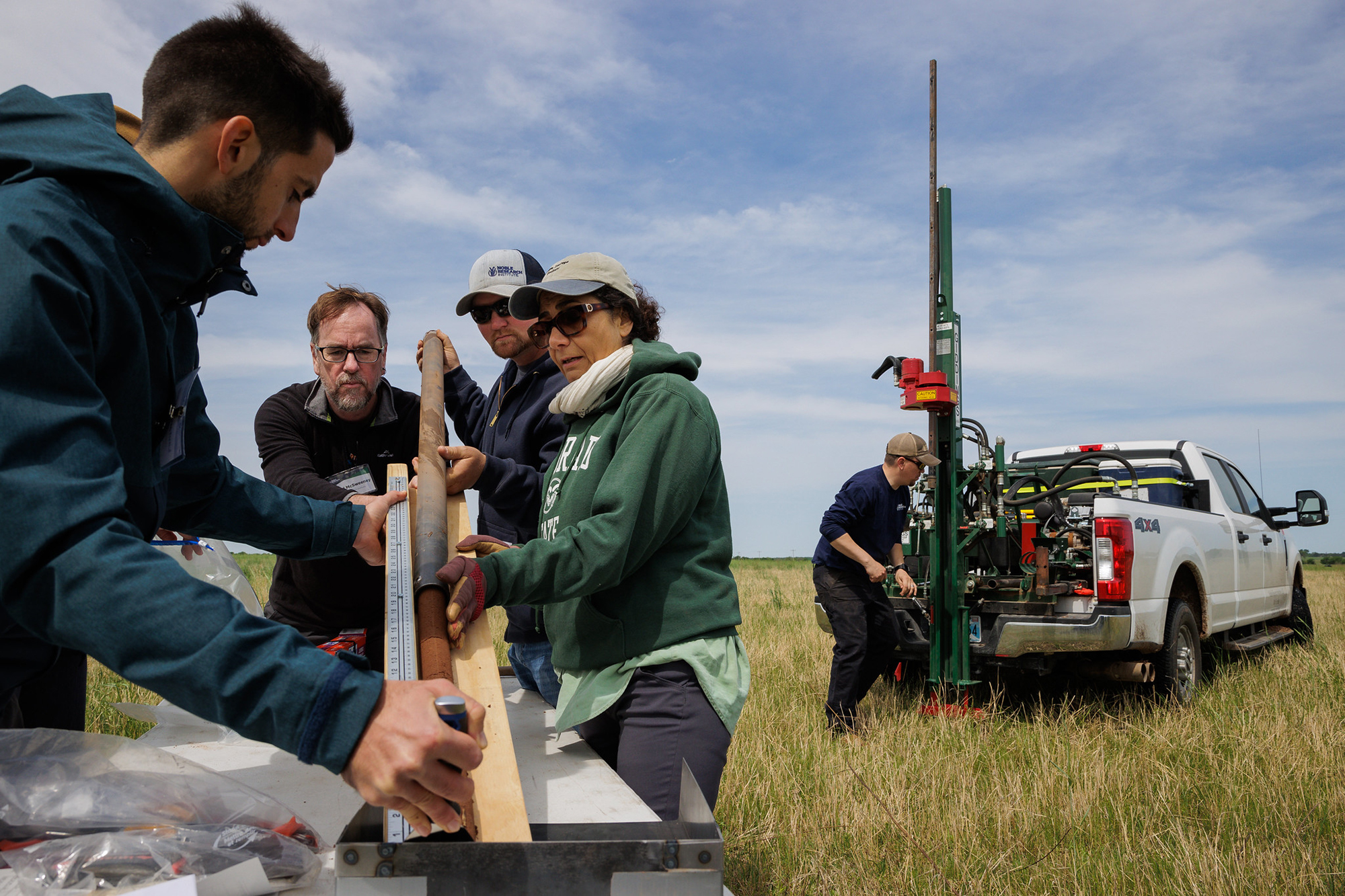
“Even further, we balance this on the social side with producer interviews to understand behavior that influences management plus economics,” said Rowntree. “With all said, the 3M project is the most forward-thinking, data-centric project that centers on the farmer and rancher and their respective operations in their operating environment.”
“Land, forage, animal people – those are the key components of the 3M Project,” said Dr. Isabella C. F. Maciel, systems researcher at Noble Research Institute and project co-lead. “I am excited to work with farmers and ranchers on the implications of their management to the health of the soil, their livelihoods and for climate change.”
3M Project Progress and Early Insights
While data gathering and analysis are still in the early stages, the project team reported that at the end of 2023:
- The project installed 30 additional flux towers to cover optimal locations on selected producer sites, bringing the tower total to 58. This is an unprecedented level of measurement across this geography and its participants. Sensors on the towers constantly monitor carbon dioxide concentrations, wind speed and direction, precipitation, air temperature, soil temperature and moisture, light and more. Preliminary data analysis suggests that the immediate impact of grazing events and other farm-level management practices may be detectable on very short timescales, reinforcing the requirement to collect as much management information as possible.
- Soil samples were completed for half (30) of the producer sites in Michigan, Colorado, Wyoming, Texas and Oklahoma. Since the project’s inception, the research team has collected more than 2 thousand soil cores — to a depth of nearly 36 inches — at locations across Oklahoma, Texas, Michigan, Wyoming and Colorado.
- After producer recruitment, the team began its comprehensive interviews and surveys of participating farmers and ranchers across the five study states in fall 2023. Farmers and ranchers volunteered to participate in this research following an open call for participants in these key states. Interviews cover participant background, operation characteristics, management goals, grazing management practices, monitoring, relational values and producer well-being. The socioeconomic well-being survey data was used to calculate a well-being index score (WB index), ranging from 0 to 100, where a higher score indicates a better level of well-being. The initial results reveal a high level of well-being among farmers/ranchers across the ecoregions.
- The Colorado State University team’s model, Microbial Efficiency — Matrix Stabilization (MEMS) simulates grazing and is intended to provide a model for estimating the ecological impacts of grazing. While still in development, MEMS now considers the effect of elevated carbon dioxide levels on plant growth to represent a climate-related impact.
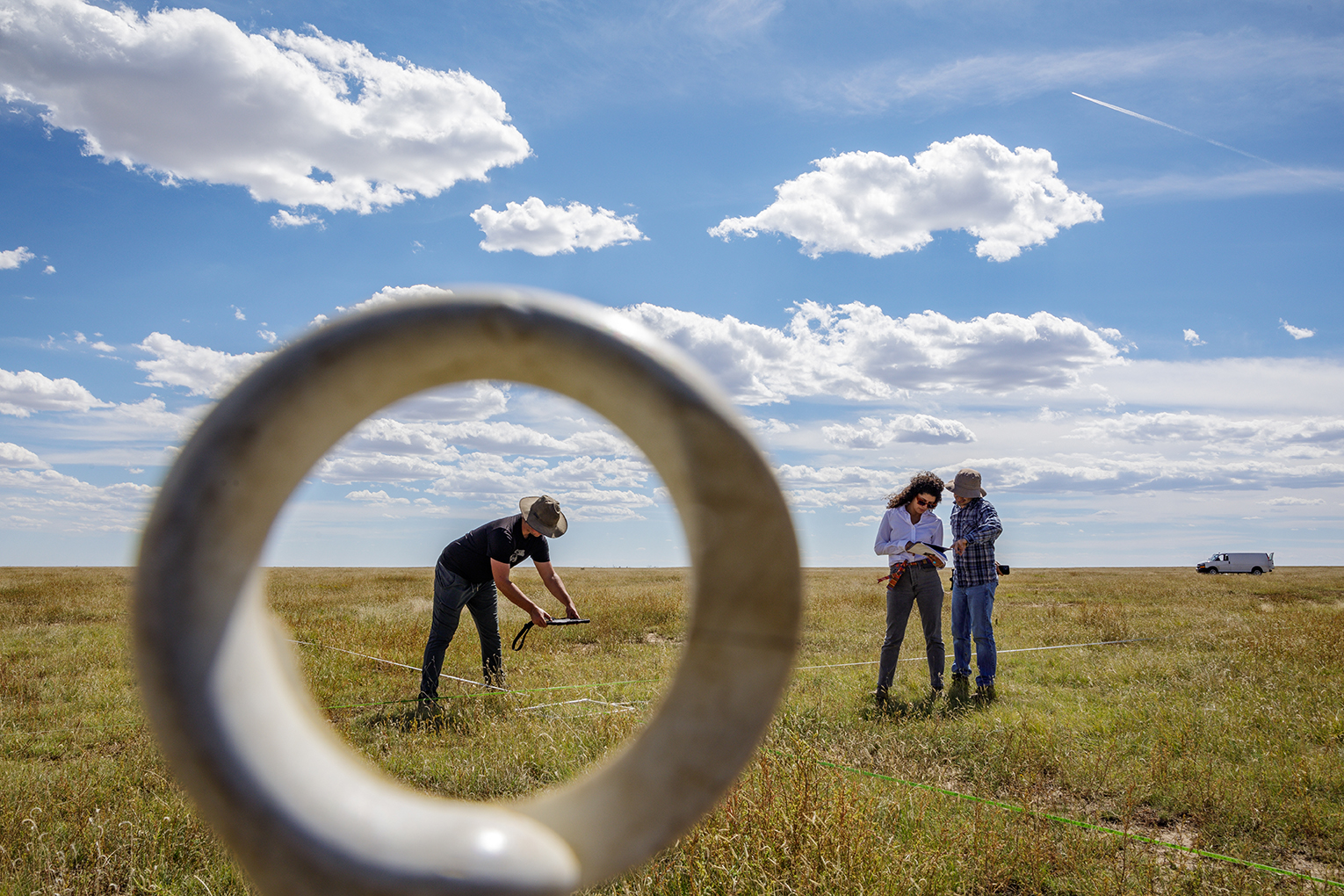
- Soil moisture sensors have been installed on selected producer sites, totaling 522 sensors installed in the five study states. The sensors are constantly monitoring soil water content. The team is also performing water infiltration rates, and early observations have shown significant differences between fall and spring infiltration rates.
- The project team verified their remote sensing products with in-field measurements suggesting they have a good response to climate drivers such as drought.
“Nothing of this scale in terms of grazing land soil science has ever been attempted before, which is part of what makes this project so special,” said Dr. Paige Stanley, research scientist with the Cotrufo Soil Innovation Lab and Noble Research Fellow. “Collecting, processing, and analyzing the nearly 3,000 soil samples we’ve collected so far has been an incredible amount of work, but the 3M team has made it a blast at every step!”
Presenting on the Project
As work on the project continues, members of the 3M team spoke at the Society for Range Management’s Change on the Range annual meeting in Sparks, Nevada, this past January. During a 1.5-hour symposium, the group spoke on several modules from the project, including water flux dynamics, producer profitability and financial well-being, and applied landscape monitoring and education.
3M speakers for the symposium include Dr. Jeff Goodwin, director of the Center for Grazinglands and Ranch Management and research assistant professor at Texas A&M; Dr. Paige Stanley, research scientist with the Cotrufo Soil Innovation Lab; Dr. Morgan MathisonSlee, post-doctoral research associate in Michigan State University’s Department of Community Sustainability; Dr. Derek Scasta, rangeland extension specialist associate professor at the University of Wyoming; Nicki Nimlos, Ph.D. student in the College of Agriculture at the University of Wyoming, Dr. Ada Smith, postdoctoral scholar in the College of Earth, Ocean and Atmospheric Sciences at Oregon State University; Dr. Alex Kuhl, research associate in the Institute of Water Research at Michigan State University; and Zekuan Dong, Ph.D. student in the Department of Agricultural, Food and Resource Economics at Michigan State University.
Year 3 Project Meeting
The 3M project is characterized by more than great individual scientists, a comprehensive data collection and sampling protocol, and a sound research plan. At its core is a dedicated research team that enjoys working together to find answers to some of the most difficult questions in grazing land systems. This team spans multiple organizations and multiple states and countries brought together to identify key, measured ecological and human drivers that impact soil health and land stewardship.
In early March of this year, the entire project team came together in Michigan for the first in-person meeting since the research began. This year’s meeting offered new project members the opportunity to learn about the origins of the research and how funding was secured. For the whole team, it allowed members to interact and receive project updates on research and outcomes across the project. This enables project members to view and assimilate research outcomes that may be outside their project-specific area of interest.
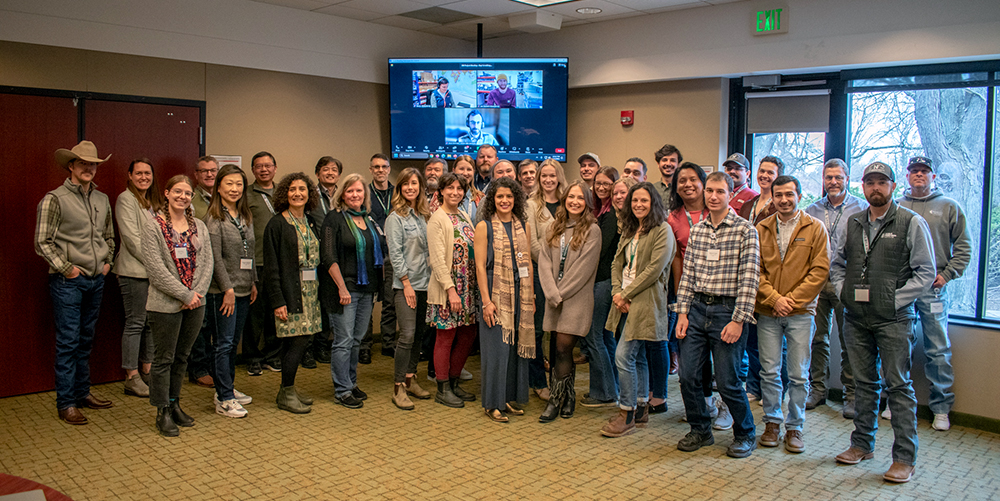
For one example of this, the meeting included a data scaffolding demonstration that showed how datasets from the study are being collected from the multiple science teams across the project and integrated for analysis and greater exploration. The data scaffolding is being developed and managed at Colorado State University.
“Beyond the invaluable contribution of each science team, what makes the 3M project so special is our effort to build a curated integrated data collection available online,” said Dr. Francesca Cotrufo, professor in the Department of Soil and Crop Sciences at Colorado State University and project co-lead. “This effort expedites the holistic modeling and validation process by sharing our data collection in a highly accessible environment.”
Looking Ahead
In year three, the team will continue project activities such as monitoring and collecting data at all “intensive sites” (working sites managed by Noble Research Institute, Michigan State University and the University of Wyoming), completing soil sampling at the almost 30 remaining producer sites (not collected in 2023), collecting additional data from producer sites, continuing model development and refinement, and conducting regional producer meetings.
Importantly, the project is more than data collection and modeling. At its conclusion, the project will provide farmers and ranchers with tools to simply and accurately measure soil health outcomes in grazing land environments. These tools will guide management decisions and quantify the impact of intentional management.
“Noble Research Institute’s founder, Lloyd Noble, shared in 1948 his belief that ‘the individual farmer, or landowner, must of necessity be the most powerful agent in conserving and improving our soil,” said Steve Rhines, president and CEO of Noble Research Institute. “The 3M project is impactful. We are building the data-centric foundation to provide today’s farmers and ranchers with unparalleled tools for assisting them make critical operating decisions to impact their land, livestock and livelihood across the United States.”
The Metrics, Management, and Monitoring project is supported by the Foundation for Food and Agriculture Research, Noble Research Institute, The Jones Family Foundation, Greenacres Foundation and ButcherBox.
To learn more about Noble Research Institute and the 3M research project, visit www.noble.org/3m/.
About Noble Research Institute
Noble Research Institute is the nation’s largest nonprofit dedicated to farm and ranch management and has been a leading, trusted resource in agriculture since 1945. The organization serves agricultural producers with education, research and consultation on regenerating soil health to improve their land, livestock and livelihood. Demonstrating its ongoing commitment to restoring U.S. grazing lands, Noble actively manages 13,500 acres of working ranchlands to provide real-world insights and applications for farmers and ranchers.
For more information about Noble Research Institute, visit www.noble.org.
For media inquiries about Noble Research Institute, please contact:
Kim Leaston | Sr. Public Relations Specialist | mailto:[email protected]
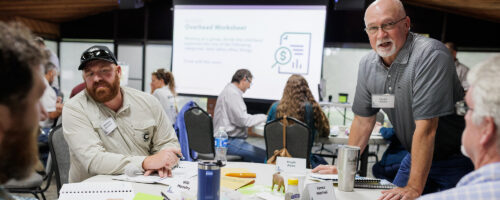
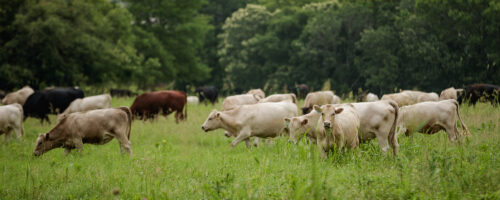
Comment